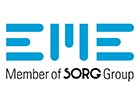From niche to mass market
Building-Integrated Photovoltaics (BIPV) have until now only been a niche feature in architecture. 2045 climate targets and future independence from fossil energy and fuel imports mean sustainable power generation via BIPV could potentially become a mass market. Current studies show that the building surfaces available in Germany by far exceed photovoltaic demand in a regenerative energy system and could produce an installed PV output of up to 1,000 Gigawatt peak (560 GWp roofs; 440 GWp façades).[[1]] For successful energy transition in Germany, depending on circumstances, 150 to 300 Gigawatt peak and/or areas of 750 to 1,500 square kilometres would suffice. Offering the greatest potential here are building skins that are in any case largely modernised because the added cost for photovoltaics is now dropping significantly and amortisation over as few as ten years is now becoming realistic. For new buildings, costs for BIPV can be lowered subject to early planning since conventional construction materials can be saved.
Germany is heading towards climate neutrality by 2045. This target might be achieved faster in the energy sector since here the transformation costs are lower than in other sectors such as agriculture, for example. Renewables are becoming the most important source of energy for the growing “power hungry” – also in the changing heating and mobility sectors.
In future, power could predominantly be generated by wind energy and photovoltaics also because of the comparatively low generation costs. According to models by the Fraunhofer-Institute for Solar Energy Systems ISE, total PV system output needs to grow to approximately 200 to 300 GW. At present, some 55 GW are installed, mainly through systems installed on roofs and open spaces. In 2020, the surface of installed BIPV was still low at 65,800 square metres (13 MWp with annual fluctuation rates of approx. 5%) but massive growth is expected because successful energy transition requires a total of 400 to 500 GWp, and of these about 50 to 300 GWp in building skins. The delta could be generated with the help of PV systems in open spaces realised in combination with agriculture, erected on bodies of water, parking lots, transport routes, in vehicles or on renatured biotopes and peatlands.
By far the largest potential for growth, however, is offered by building skins. With their large usable surfaces they would, subject to being fitted with PV, make energy supply more sustainable especially in cities because solar building skins substantially reduce CO2 emissions in the building sector, avoid grid expansion costs and add future-proof local value. Each new building, each refurbishment with BIPV would contribute to the energy transition and generate revenue for building operators at the same time. In Germany, about 107 million square metres of façade and 63 million square metres of pitched roofs are built every year. [[2]] If these surfaces were used, the output could go up to 33 GWp. An interim target has already been set for 2030 by the Renewable Energies Act (EEG) – a renewable energy share of 65% of gross power consumption. To achieve this target, a continuous annual PV addition of 5 to 10 GWp is required depending on developments in power needs and wind power expansion.
Integration in digital construction planning needed
An important building block for developing the market is the integration of BIPV products into the planning of construction processes, especially via such digital tools as BIM (Building Information Modelling). However, to ensure PV functions are regularly integrated into building products, simplifications in building product laws and technical provisions as well as incentives through fiscal and regulatory instruments are needed – which is where policy-makers must step in. Additionally, many stakeholders from society should send out clear signals to politicians: when it comes to electricity and heating, mobility and consumption, consumers can give preference to energy-efficient products and renewable energies thereby generating massive demand. Investors are finding attractive long-term investment options in the energy transition. Decision-makers should check which measures provide sustainable returns and promote green transformation. Countries, cities and communities should promote sustainable projects and plan their own investment accordingly. In the final analysis, companies should be encouraged to push for PV production in Germany again, to avoid dependencies and leave the “fossil” age behind where every year 3-digit billion figures are paid for oil and gas imports to cartels and authoritarian regimes. Raw materials for PV production are available in Germany which played a key role in developing solar technologies before false political decisions led to outsourcing of relevant jobs to the Asian region. Domestic PV production would permit long-term supply security and compliance with high ecological and quality standards – a competitive edge.
Another key aspect of expansion would be to make the real costs of different types of power generation more transparent: photovoltaics still has a reputation for being a relatively expensive technology for power generation – about EUR 300 per square metre as full system costs for smaller to medium-sized roof-top systems are realistic while integrated systems are a little more expensive.
However, if a conventional façade is replaced or a new solar façade is planned, costs decrease. Larger roof-top or outdoor systems are also efficient without affecting external costs – their full costs for power generation are between 5-10 Euro cents/kWh, comparable to the costs of gas-fired power plants. Taking a closer look, it also becomes clear that cost comparisons with fossil-fuel or nuclear-power generation are currently somewhat distorted – because their external costs and the risks associated with the damage they cause to the environment, climate and health have been largely left out of the equation – which effectively means conventional energy carriers enjoy hidden subsidies. The marginal costs by no means cover the neutralisation of nuclear waste or greenhouse gas emissions (CO2, NOX, SOX etc.), to name but two – these “concealed” costs are currently borne by the public at large. Even more essential, however, is focusing on the biggest challenge of them all, CO2 neutrality: PV-based power generation reduces CO2 emissions substantially and would be highly effective for the reduction of the greenhouse effect.
Volatile power from renewable energies needed
Power needs for heat generation (buildings, industry), mobility and as a primary material for chemical processes will be subject to permanent and long-term increases – this is evident in the glass industry, for example: BV Glas expects natural-gas fired float glass furnaces to be converted to electrical and hybrid technologies with “green” hydrogen by 2045. Otherwise, the international agreements on CO2 neutrality would not be achievable. Here, electrolytic hydrogen production from renewable power plays a pivotal role. Likewise, e-mobility is increasing our need for more electricity which can be covered by renewable power generation because it is self-compensating due to different seasonal, geographical and technological factors. Weather dependencies associated with wind energy and photovoltaics can be compensated for across European national borders.
The rising degree of decentralisation as well as the coordination of volatile power generation and controllable consumption especially in Germany presupposes strong digital expansion and, ideally, a standardised development across Europe.
Further incentives for using BIPV are self-evident: modern modules permit not only solar power generation but also attractively blend with the façade (important for consumer acceptance), improve heat insulation as well as protection against wind and weather – also shade – when integrated in glass façades. At present, the first transparent BIPV product designs are being introduced to the market which can aesthetically be combined with solar-protection glazing or other materials in the façade. Researchers at the Fraunhofer ISE see great opportunities for European companies when it comes to mass-produced and yet customisable BIPV modules – offering sustainable added value and allowing architects and façade planners to find matching products for any given project. The Institute itself developed “Morpho-Color©”, modules equipped with highly efficient colour coatings (maximum 10% loss of efficiency versus entirely transparent front covers) with variable cell and module formats and appealing design options. These pave the way for solar building envelopes, partly transparent with visible silicon solar cells or opaque in various colours.

























